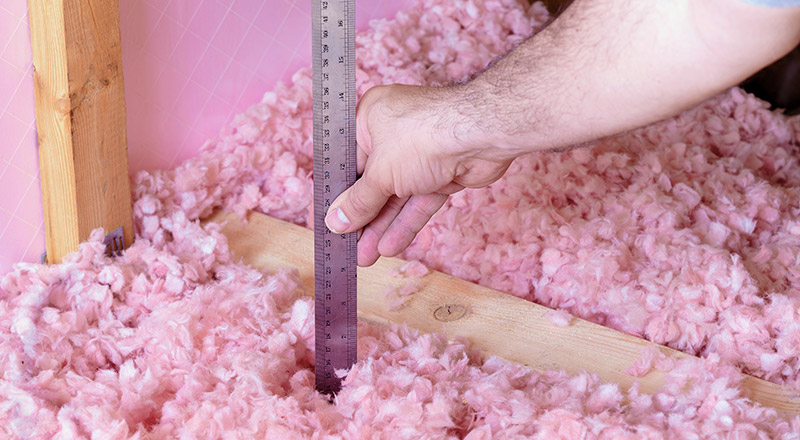Is your attic haunted by lack of insulation?

I’m wondering if more insulation could help keep my heating bills low this winter. Where in my home should I add insulation?—Loreen
Your attic is one of the first places to consider insulation since it is accessible and air leaks can be easily checked. Insulation standards for new homes increased in 2012, and many homes built before then do not have the current recommended amount of attic insulation.
Insulation is graded by its R-value—the higher the R-value, the greater the insulating power. If you live in a colder climate such as Kentucky, your attic should have a minimum grade of R-49, or about 16-18 inches of insulation (milder southern climates require R-38, or about 13–14 inches of insulation).
How can you tell if your attic is lacking in insulation? Generally, if you can see the ceiling joists on the attic floor, there is not enough insulation.
Choosing an insulation
There are two types of insulation you can place on your attic floor: batt/roll or blown-in/loose fill. Blown-in insulation requires special equipment to install, but it fills the space better than batt insulation, which can leave gaps and voids.
Insulation is most commonly made from fiberglass, cellulose, or mineral wool. Many energy advisors recommend blown-in cellulose insulation due to its superior coverage, high R-value, and air sealing abilities; it’s also treated with boric acid, which acts as a fire retardant and insect repellent.
Hiring a trained energy auditor is the best way to diagnose insulation shortcomings; check with your electric co-op to see if it offers energy audits or can refer you to a local energy auditor. Also ask your electric co-op about rebates offered as part of a weatherization program, which often includes adding insulation.
For more information on sealing and insulating your attic, go to energy.gov and click on the “Energy Saver” tab.
Before you add insulation
• Remove stored items, or build a storage platform high enough to insulate beneath it.
• In older homes, check the attic’s electric wiring and have it replaced if necessary.
• It is usually not necessary to remove existing attic insulation, unless it is wet, moldy, or contains animal waste.
• Decide who will do the work—you or a contractor. Installing insulation is messy, potentially dangerous, and requires special equipment.
• Seal attic air leaks, such as around furnace flues, exposed air ducts, and the attic door or hatch.
Patrick Keegan and Amy Wheeless

